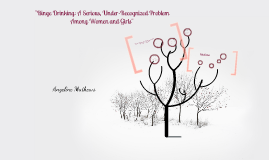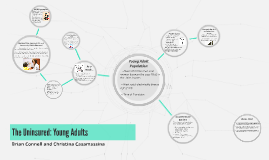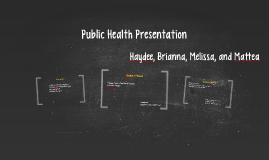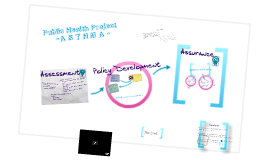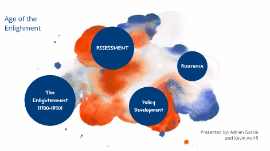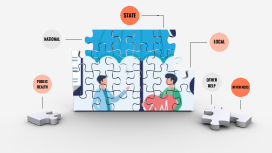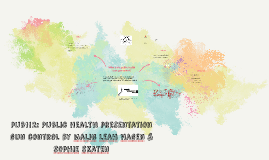Public health presentation
Transcript: Where? How common? Home and family (5) Friends and neighbours (5) Political institutions (5,8) Voluntary organizations (9,5) Social support networks (9) Health care systems (5) https://injuryprevention-bmj-com.ezproxy.usc.edu.au/content/12/6/365?ijkey=6e084bbccab538e1f386d663b492fbc22bc35937&keytype2=tf_ipsecsha Alcohol and drug abuse (10) Education and socioeconomic status (11) 238 gun related deaths in 2016 (2) Behavioral and Biochemical components Social injustices: 8. Chapman S, Alpers P, Agho K, Jones M. Australia’s 1996 gun law reforms: faster falls in firearm deaths, firearm suicides, and a decade without mass shootings. Inj Prev 2015;21(5)355 9. Stedman H, Monahan J, Pinals D, Vesselinov R, Robbins P. Gun violence and victimization of strangers by persons with a mental illness: data from the MacArthur violence risk assessment study. Psychiatr serv 2015 Nov 1;66(11)1238-1241 10. Wo J. Revising the crime control benefits of voluntary organizations: organizational presence, organizational capacity and crime rates in Los Angeles neighborhoods. Crime delinq 2018 Jul 19;45(1)1-25 11. Buschmann R, Prochaska J, Bailargeon J, Temple J. Firearm carrying and cincurrent substance use behaviours in a community-based sample of emerging adults. Inj Prev 2017;23(6)383 12. Schwaner S, Furr L, Negrey C, Seger R. Who wants a gun license? Journal of criminal justice. 1999;27(1)1-10 13. Hatherill J. Toxic chemicals and violent behavior. The world and I 2000;15(5)170 14. Shin J, Park JY, Choi J. Long-term exposure to ambient air pollutants and mental health: A nationwide population-based cross-sectional study. Plos one 2018 Apr 9;13(4)1-12 15. Parkinson D, Zara C. The hidden disaster: domestic violence in the aftermath of natural disasters. Aus J Emerg Med 2013;28(2)28-35 Young people age 10-19 years (5) Social disadvantages and unemployment (3) Substance abuse and mental health illnesses (3) Males (6) 1. Briggs A, Fisher E. It’s time for a change of message, it’s time for #gunsafetynow. Lancet 2018 Apr 18; 391(10128)1353-1353 2. Alpers P, Rossetti A, Picard M. Gun facts, figures and the law. Australia: Sydney school of public health, the university of Sydney. 2016. https://www.gunpolicy.org/firearms/region/australia#total_number_of_gun_deaths 3. Chapman S. Alpers P. Australia’s 1996 gun law reforms halted mass shootings for 22 years: a response to criticism from Gary Kleck. Contemporary readings in law and social justice 2018;10(1):94-103 4. Macphedran S, Baker J, Singh P. Firearms homicides in Australia, Canada and New Zealand: What we can learn from long-term international comparisons? J Interpers Violence 2010 Mar 16;26(2):348-359 5. Williamson A, guerra N, Tynan D, Shroff J. The role of health and mental health care providers in gun violence prevention. Clin Pract Pediatr Phychol 2014;2(1)88-98 6. Mcphedran S. An evalution of the impacts of changing firearms legislation on Australian female firearm homicide victimization rates. Violence against women 2018;24(7)798-815 7. Clifford W. Facts and ideas from anywhere. Proc (Bayl Univ Med Cent) 2017;30(1)130-136 Who? References: https://injuryprevention-bmj-com.ezproxy.usc.edu.au/content/12/6/365?ijkey=6e084bbccab538e1f386d663b492fbc22bc35937&keytype2=tf_ipsecsha https://www.maxpixel.net/Violence-Ban-Revolver-Gun-Control-Stop-Guns-3603711 Biophysical Environment pub112: Public health presentation gun control by malin leah hagen & sophie skaten The public health issue of gun control is about all actions taken towards creating gun safety while preventing gun related violence and firearm deaths.(1) What is the public health issue gun control? Illicit drug trade - New South Wales (3) Regions with higher gun ownership (5) 1996 National firearms agreement (NFA) (3) Illegal owned guns (4) https://injuryprevention-bmj-com.ezproxy.usc.edu.au/content/12/6/365?ijkey=6e084bbccab538e1f386d663b492fbc22bc35937&keytype2=tf_ipsecsha Reduced after the NFA in 1996 (7) Determinants of gun control Gun Control Why is this a public health issue? SocioEconomic Environment Polluted air and heavy metals (13,14) Natural disasters (15) Individuals behavior https://online.usc.edu.au/bbcswebdav/pid-1601813-dt-content-rid-8102590_2/courses/PUB112_2018_Semester_2/van%20leeuwen%201999%20Evolving%20Models%20of%20Health.pdf Males Social disadvantages areas Alcohol and substance abuse Mental illnesses & young people






